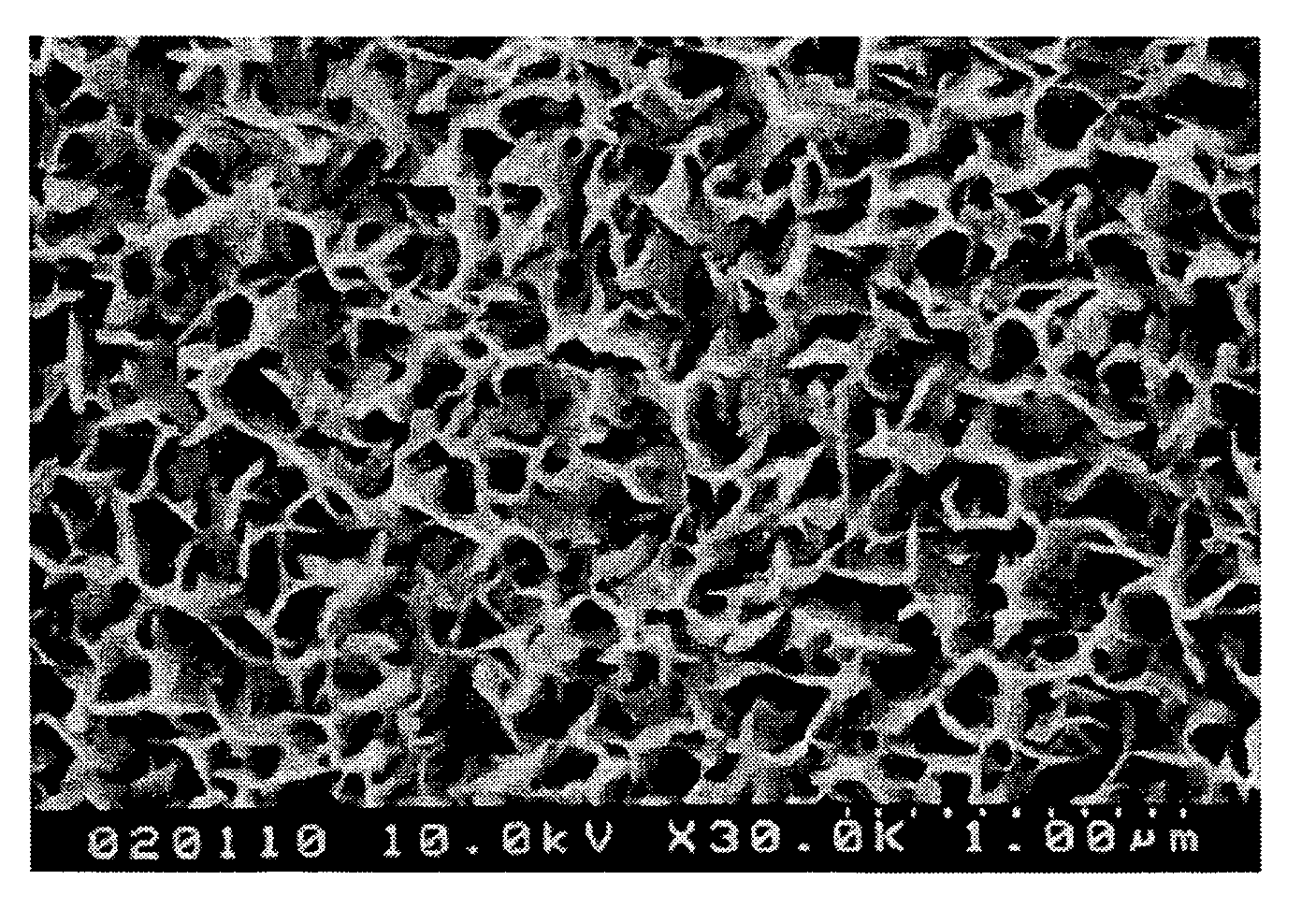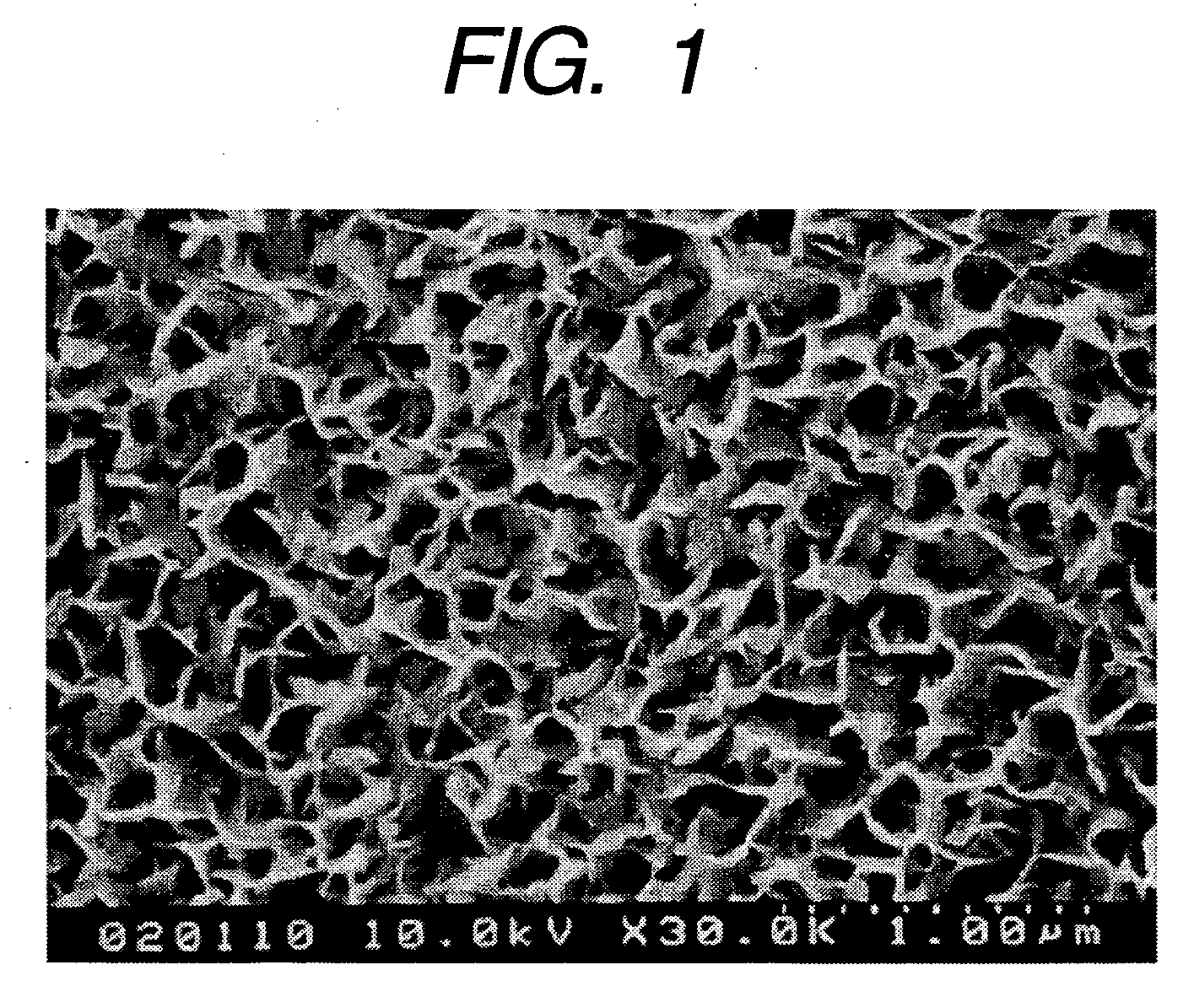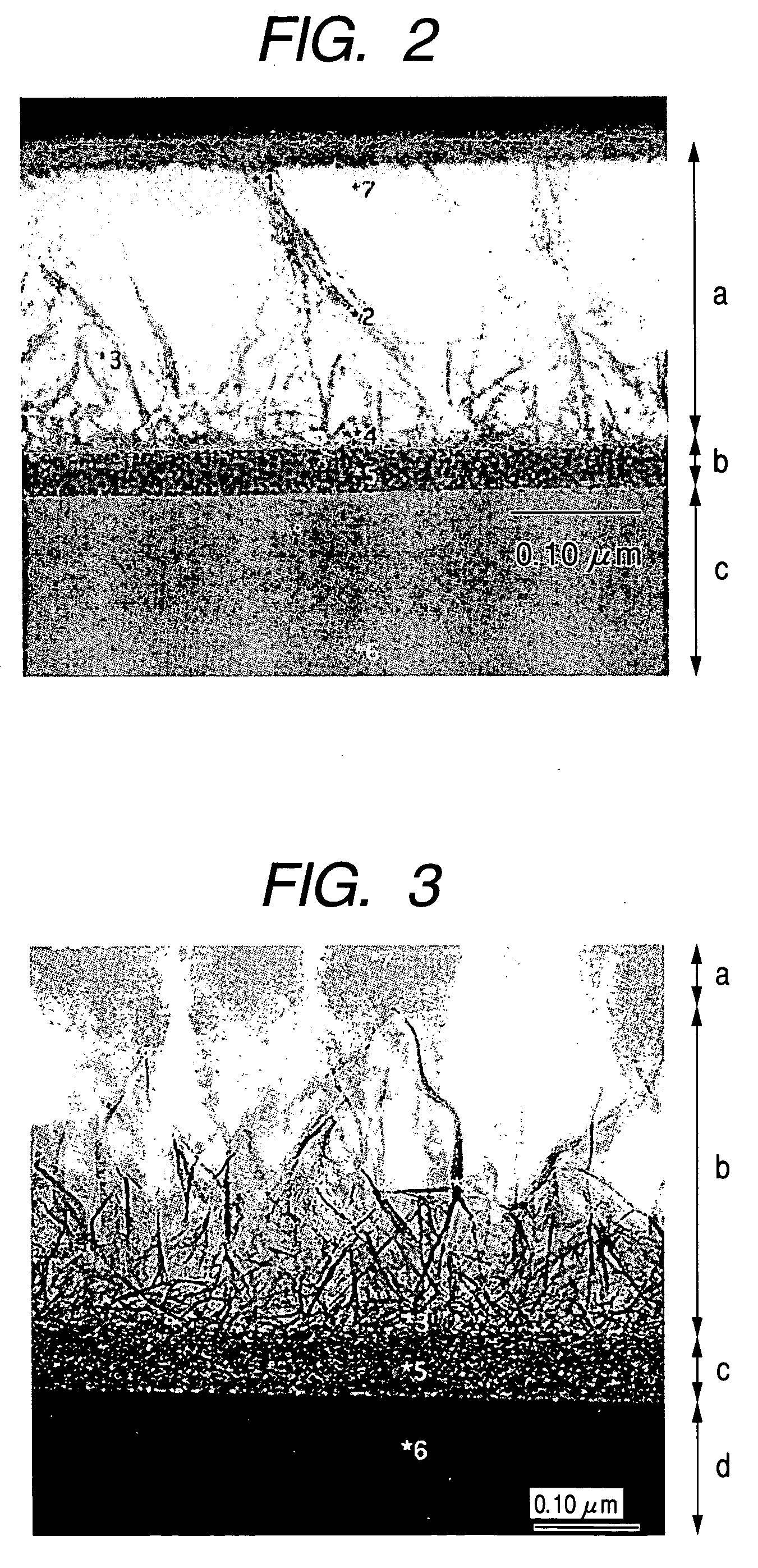Film and antireflection film having fine irregularities on surface, production method for the same, and optical member using the same
a production method and film technology, applied in the direction of roads, instruments, traffic signals, etc., can solve the problems of insufficient anti-reflection performance of films, limited surface structure and size of alumina single components, and insufficient surface roughness of films, etc., to achieve excellent anti-reflection effect, excellent heat resistance, excellent anti-reflection
- Summary
- Abstract
- Description
- Claims
- Application Information
AI Technical Summary
Benefits of technology
Problems solved by technology
Method used
Image
Examples
example 1
[0089] A clear float glass substrate (soda lime silicate-based composition) of a size of 100 mm×100 mm and a thickness of about 2 mm was subjected to ultrasonic cleaning with isopropyl alcohol and was dried, to thereby prepare a glass substrate for coating.
[0090] Aluminum sec-butoxide (Al(O-sec-Bu)3) was dissolved in 2-propanol (IPA), and ethyl acetoacetate (EAcAc) was added thereto as a stabilizer. The mixture was stirred at room temperature for about 3 hours, to thereby prepare an Al2O3 sol solution. A molar ratio of the solution was Al(O-sec-Bu)3:IPA:EAcAc=1:20:1.
[0091] Meanwhile, zirconium isopropoxide (Zr(O-iso-Pr)4) was also dissolved in IPA, and EAcAc was added thereto. The mixture was stirred at room temperature for about 3 hours, to thereby prepare a ZrO2 sol solution. The molar ratio of the solution was Zr(O-iso-Pr)4:IPA:EAcAc=1:20:1.
[0092] The ZrO2 sol solution was added into the Al2O3 sol solution in a weight ratio of Al2O3:ZrO2=0.7:0.3. The mixture was stirred for ab...
example 2
[0100] The Al2O3 sol was prepared in the same manner as that in Example 1.
[0101] Meanwhile, tetraethoxysilane (TEOS), IPA, and 0.01 M (HCl aq.) were mixed, and the whole was stirred at room temperature for about 3 hours, to thereby prepare an SiO2 sol solution. A molar ratio of the solution was TEOS:IPA=1:20. An amount of HCl aq. added was a sum of equal moles of Al(O-sec-Bu)3 and twice moles of TEOS. The SiO2 sol solution was added into the Al2O3 sol solution in a weight ratio of Al2O3:SiO2=0.7:0.3, to thereby prepare an Al2O3—SiO2 sol as an application liquid.
[0102] Next, the same glass substrate subjected to the same cleaning treatment as that of Example 1 was immersed in the application liquid, and then an coating film was formed on the surface of the glass substrate through a dipping method (lifting speed of 3 mm / s, 20° C., 56% R.H.). The resultant was dried and then subjected to heat treatment at 100° C. for 1 hour, to thereby obtain a transparent, amorphous Al2O3 / SiO2-based...
example 3
[0105] The SiO2 sol solution used in Example 2 was added into the Al2O3 sol solution used in Example 1 in a weight ratio of Al2O3:SiO2=0.5:0.5, to thereby prepare an Al2O3—SiO2 sol as an application liquid.
[0106] Next, FE-SEM observation and SPM observation were conducted on the surface of the film formed, subjected to hot water treatment, and dried under the same conditions as those of Example 2, and fine irregularities of plate crystals mainly composed of alumina, similar to those of Example 1, were observed. The average surface roughness Ra′ (nm) and surface area ratio Sr obtained through the SPM measurement were Ra′=75 nm and Sr=2.7, respectively.
[0107] Table 1 shows the relationship between the average surface roughness Ra′ and the film transmittance / reflectance.
PUM
| Property | Measurement | Unit |
|---|---|---|
| height | aaaaa | aaaaa |
| roughness | aaaaa | aaaaa |
| weight ratio | aaaaa | aaaaa |
Abstract
Description
Claims
Application Information
 Login to View More
Login to View More - R&D
- Intellectual Property
- Life Sciences
- Materials
- Tech Scout
- Unparalleled Data Quality
- Higher Quality Content
- 60% Fewer Hallucinations
Browse by: Latest US Patents, China's latest patents, Technical Efficacy Thesaurus, Application Domain, Technology Topic, Popular Technical Reports.
© 2025 PatSnap. All rights reserved.Legal|Privacy policy|Modern Slavery Act Transparency Statement|Sitemap|About US| Contact US: help@patsnap.com



